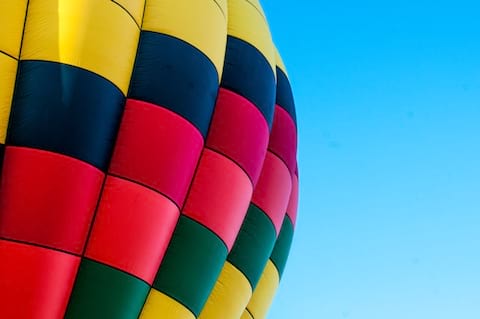8 releases (breaking)
| 0.7.0 | Mar 26, 2025 |
|---|---|
| 0.6.0 | Feb 15, 2025 |
| 0.5.0 | Aug 13, 2024 |
| 0.4.0 | Jun 7, 2024 |
| 0.1.1 | Apr 30, 2024 |
#329 in Images
163 downloads per month
Used in auto-palette-cli
260KB
6K
SLoC
auto-palette
🎨 A Rust library for automatically extracting prominent color palettes from images.
Features


Note
Photo by Laura Clugston on Unsplash
- Automatically extracts prominent color palettes from images.
- Provides detailed information on color, position, and population.
- Supports multiple extraction algorithms:
DBSCAN,DBSCAN++, andKMeans++. - Supports numerous color spaces:
RGB,HSL,LABand more. - Theme-based swatch selection:
Basic,Colorful,Vivid,Muted,Light, andDark.
Installation
Using auto-palette in your Rust project, add it to your Cargo.toml.
[dependencies]
auto-palette = "0.7.0"
Usage
Here is a basic example that demonstrates how to extract the color palette and find the prominent colors.
use auto_palette::{ImageData, Palette};
fn main() {
// Load the image data from the file
let image_data = ImageData::load("../../gfx/holly-booth-hLZWGXy5akM-unsplash.jpg").unwrap();
// Extract the color palette from the image data
let palette: Palette<f64> = Palette::extract(&image_data).unwrap();
println!("Extracted {} swatches", palette.len());
// Find the 5 prominent colors in the palette and print their information
let swatches = palette.find_swatches(5);
for swatch in swatches {
println!("Color: {}", swatch.color().to_hex_string());
println!("Position: {:?}", swatch.position());
println!("Population: {}", swatch.population());
}
}
For more advanced examples, see the examples directory.
Documentation
See the full documentation on docs.rs.
ImageData
The ImageData struct represents the image data that is used to extract the color palette.
ImageData::load
Loads the image data from the file.
This method requires the image feature to be enabled. The image feature is enabled by default.
[dependencies]
auto-palette = { version = "0.7.0", features = ["image"] }
image = { version = "0.25.6", features = ["jpeg"] } # if you want to load jpeg images
// Load the image data from the file
let image_data = ImageData::load("path/to/image.jpg").unwrap();
ImageData::new
Creates a new instance from the raw image data.
Each pixel is represented by four consecutive bytes in the order of R, G, B, and A.
// Create a new instance from the raw image data
let pixels = [
255, 0, 0, 255, // Red
0, 255, 0, 255, // Green
0, 0, 255, 255, // Blue
255, 255, 0, 255, // Yellow
];
let image_data = ImageData::new(2, 2, &pixels).unwrap();
Palette
The Palette struct represents the color palette extracted from the ImageData.
Palette::extractPalette::extract_with_algorithmPalette::find_swatchesPalette::find_swatches_with_theme
Palette::extract
Extracts the color palette from the given ImageData.
This method is used to extract the color palette with the default Algorithm(DBSCAN).
// Load the image data from the file
let image_data = ImageData::load("path/to/image.jpg").unwrap();
// Extract the color palette from the image data
let palette: Palette<f64> = Palette::extract(&image_data).unwrap();
Palette::extract_with_algorithm
Extracts the color palette from the given ImageData with the specified Algorithm.
The supported algorithms are DBSCAN, DBSCAN++, and KMeans++.
// Load the image data from the file
let image_data = ImageData::load("path/to/image.jpg").unwrap();
// Extract the color palette from the image data with the specified algorithm
let palette: Palette<f64> = Palette::extract_with_algorithm(&image_data, Algorithm::DBSCAN).unwrap();
Palette::find_swatches
Finds the prominent colors in the palette based on the number of swatches.
Returned swatches are sorted by their population in descending order.
// Find the 5 prominent colors in the palette
let swatches = palette.find_swatches(5);
Palette::find_swatches_with_theme
Finds the prominent colors in the palette based on the specified Theme and the number of swatches.
The supported themes are Basic, Colorful, Vivid, Muted, Light, and Dark.
// Find the 5 prominent colors in the palette with the specified theme
let swatches = palette.find_swatches_with_theme(5, Theme::Light);
Swatch
The Swatch struct represents the color swatch in the Palette.
It contains detailed information about the color, position, population, and ratio.
// Find the 5 prominent colors in the palette
let swatches = palette.find_swatches(5);
for swatch in swatches {
// Get the color, position, and population of the swatch
println!("Color: {:?}", swatch.color());
println!("Position: {:?}", swatch.position());
println!("Population: {}", swatch.population());
println!("Ratio: {}", swatch.ratio());
}
Tip
The Color struct provides various methods to convert the color to different formats, such as RGB, HSL, and CIE L*a*b*.
let color = swatch.color();
println!("Hex: {}", color.to_hex_string());
println!("RGB: {:?}", color.to_rgb());
println!("HSL: {:?}", color.to_hsl());
println!("CIE L*a*b*: {:?}", color.to_lab());
println!("Oklch: {:?}", color.to_oklch());
Development
Follow the instructions below to build and test the project:
- Fork and clone the repository.
- Create a new branch for your feature or bug fix.
- Make your changes and write tests.
- Test your changes with
cargo test --lib. - Format the code with
cargo +nightly fmtandtaplo fmt. - Create a pull request.
License
This project is distributed under the MIT License. See the LICENSE file for details.
Dependencies
~4.5MB
~79K SLoC
